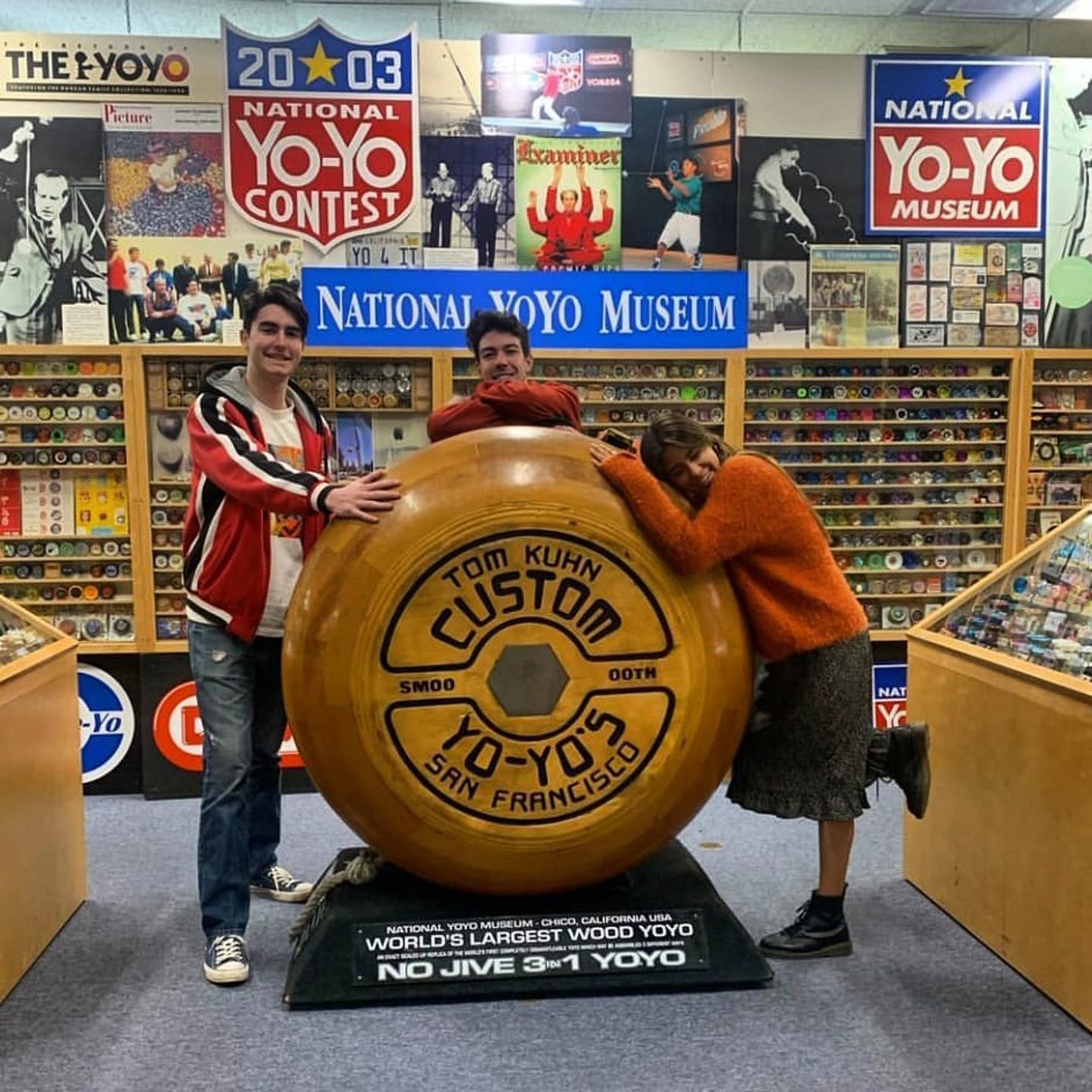Every year on June 6 — National Yo-Yo Day — one of Chico’s more inconspicuous treasures steps into the spotlight.
Near the back of Downtown Chico’s Bird in Hand, the National Yo-Yo Museum — the bona fide mecca of American yo-yo culture — has operated since 1993, bringing the joy of the iconic toy to kids of all ages for nearly 30 years. From this unassuming spot in Chico, founder Bob Malowney leads the long-running ode to the pastime, selling yo-yos, teaching visitors about its long history, and leading contests both locally and nationally.
“The yo-yo museum is kind of a given here in town. People know we’re here, and go, ‘That’s neat,’” Malowney said. “But when we go somewhere else, Chico is a big deal. It’s like Cooperstown for baseball, or Canton for football. All you need is somebody who has a passion about something to do something about it.”That fits Malowney, and the National Yo-Yo Museum, to a tee. When he started the museum in the early 1990s, yo-yoing hadn’t picked up as a major trend — but Malowney saw it coming. He had been hosting yo-yo competitions and selling the toys locally in the late ‘80s, working with the Chico Area Recreation District to put on tests of trickery, and they were popular in town among the most enthusiastic yo-yoers.
The Pop Culture Rise of the Yo-Yo
“We had lots of kids there and lots of their parents there doing it with them. It grew really quick, and the interest people had was genuine,” Malowney recalled. “When I saw that enthusiasm and looks on the kids’ faces, that’s when I saw it coming.”
Surely enough, the yo-yo scene began its American eruption in the mid-’90s, especially near the end of the decade, thanks in large part to a simultaneous boom in Japanese popularity when toymaker Bandai began production of its own models. One of the most endearing, everlasting points of interest with the yo-yo is that its design, while imminently modifiable to a toymaker’s tastes, is essentially unchanged since its first recorded uses — some scholars date it back to ancient Greece or even 1,000 BC China.
Keeping Interest Alive
“When we first started the museum in 1993, nobody was much interested. We’d have people come in, stand in line and throw one a dozen times or so, and then never pick one up again,” Malowney said. “By the end of the ‘90s, it was a phenomenon.”
The museum itself tells that transition. Having lived it, day by day, Malowney understands that in addition to collecting old items, and interpreting how toys might have been played with before, the museum provides visitors with a chance to dive into history both ancient and living. It relies on donations to display old models and styles, and Saturday contests and lessons to keep people actively engaged. Visitors can buy yo-yos in the toy shop, but visitation to the museum itself is and always has been free.
Nostalgic Appeal
“Like all museums, we’re trying to preserve something that not everybody got to experience, but they can see and experience it after the fact with the collection of past antiquities,” Malowney said. “So many people remember the yo-yo. It’s a rite of childhood, to play with a yo-yo and see how good you are. Even kids today, who have smartphones and play video games, really appreciate the tactile appeal. We hear stories about kids getting a yo-yo and playing with it while they’re waiting in line, and everyone around starts looking and now the kid has an audience. It’s just something that’s appreciated by everybody.”
The museum also oversees the competitive National Yo-Yo League, which began the same year the museum opened, and Malowney’s team oversees all the official contests across the United States, administering from the Chico location. Truly the epicenter of American yo-yo, the town holds the title quietly, despite having been a driving force behind the toy’s revered nature over the decades.
Inherent Joy
“Chico’s very enlightened about yo-yos, to the point where an average Chico person showing a friend visiting will routinely amaze me with how much they know about all the different displays,” Malowney said, noting that there is something inherent to the enjoyment of the yo-yo to all humans — which might explain why it dates back so far, or why it’s been able to maintain its storied place in toy lore.
“There’s just something about it,” Malowney said with a smile. “The world is spinning, and this is spinning, so it all feels like it just works together.”

